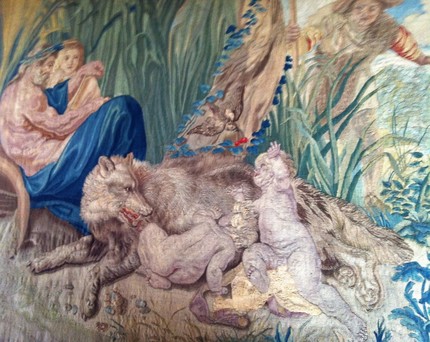
The technique was applied to create ornaments for chairs, bed, and other furnitures aside from the walls decoration. Nowadays the wall tapestries are the only ones preserved in museums.
The habit of transferring the ‘tapestry room’ and sets from one residence to the other was practical but damaged many manufactures. Cut were done to large tapesties to adjust them to the new locations.
Arazzi Room, Capitoline Museum, Rome
Tapestries were hung on palace’s facades along the road where the corteo nuziale or high dignitaries were passing.
Same large sized tapestries were created for such happenings: the entrance of a king in town, papal incrowning processions, religoious feasts when the whole city was embellished.
Some examples follows.
In 1462 during the feats of Corpus Domini the city of Viterbo was entirely ornated with tapestries.
In 1473 the Vatican palaces were entirely adorned with tapestries depicting floral mothifs on occasion of the visit of Eleonora d’Aragona along her journey to get married to Ercole d’este.
In 1489 on occasion of Gian Galeazzo Sforza wedding the road connecting the castle and the cathedral was all faced with rich tapestries;
the same happened in 1493 when Bianca maria Sforza married the emperor maximilian.



